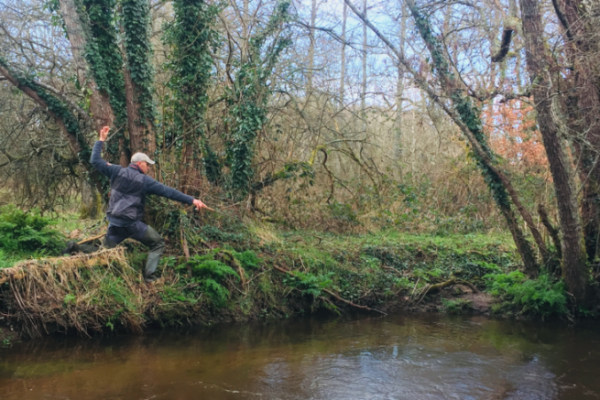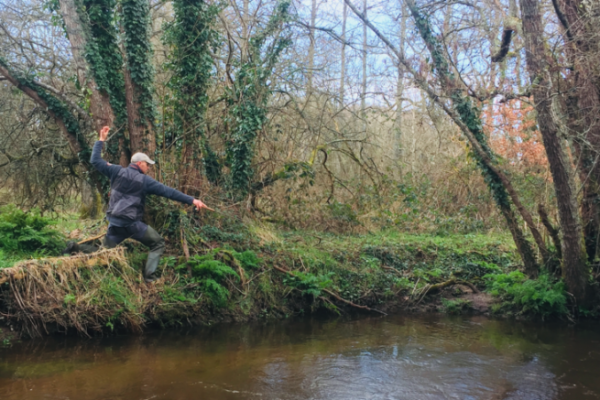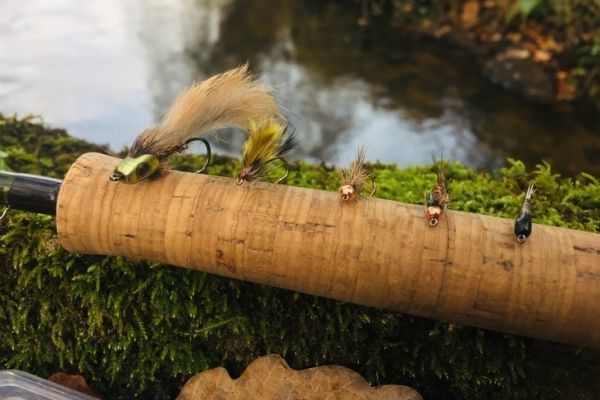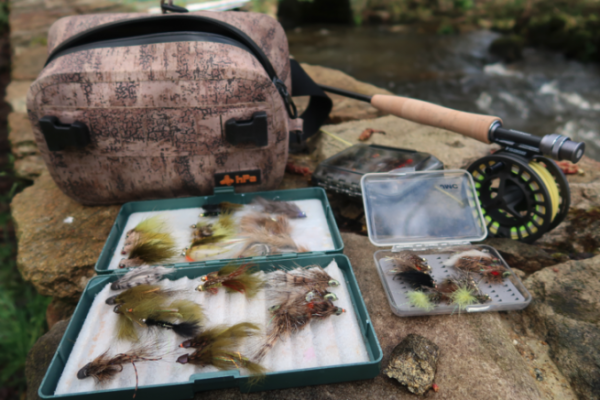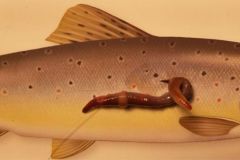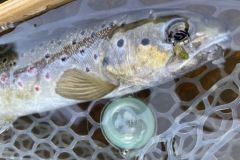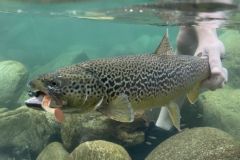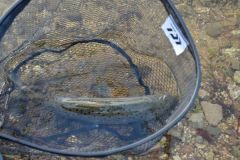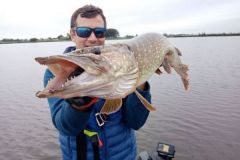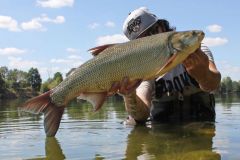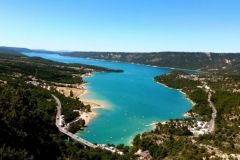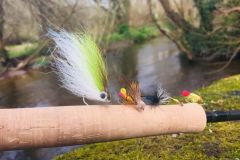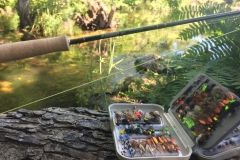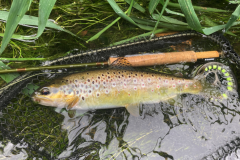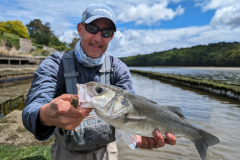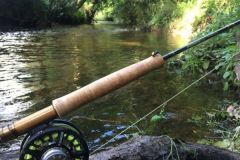When it comes to opening, everyone has their own opinion, whether on the technique used, the choice of sectors, and whether it will be done alone or with friends.
Usual opening or depending on conditions?
Many anglers open their season on the same river, in the same place and often with the same friends! It's a tradition that continues for some, who return to the water's edge more for the pleasure of finding their way back to the river than to catch their first trout. But in the end, these first catches of the season are important.
The advantage of this first choice is that you know your fishing area well, and where the trout should be based on water levels. This category of angler knows exactly where the trout should be placed and at what time of day to tackle a particular sector. Their years of experience on the same river give them a certain confidence and self-assurance.
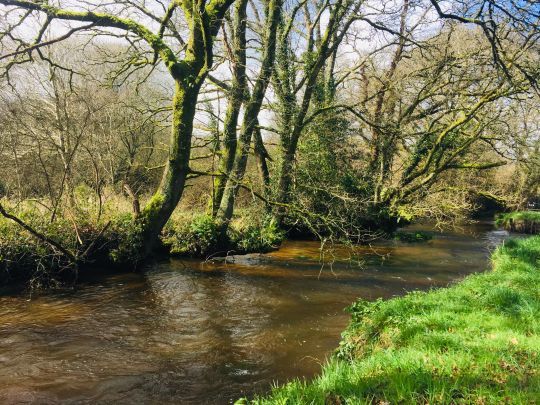
In the second case, the angler chooses the river or fishing spot according to current conditions, notably water levels, temperature and weather on the day.
A few days before the fateful date, it's a good idea to find out where it's best to go, depending mainly on the flow rates, which can vary greatly from year to year.
Then, the choice of technique used will either depend on your desires, or will be linked to the desire to catch your first trout, regardless of the technique used.
Wire nymphing, drowning, streamer or even dry fishing can help you catch your first trout of the year, but you still need to know how to use the right technique at the right time.
The early hours of the day are rarely favourable, but if you fish close to the bottom with a nymph or streamer, you'll be able to catch a few fish that are gradually waking up from their lethargy.
Then, as the air and water warm up in the middle of the day, the insects should become active, bringing out the trout for a few hours. Drowning or even drying can be practised with some success.
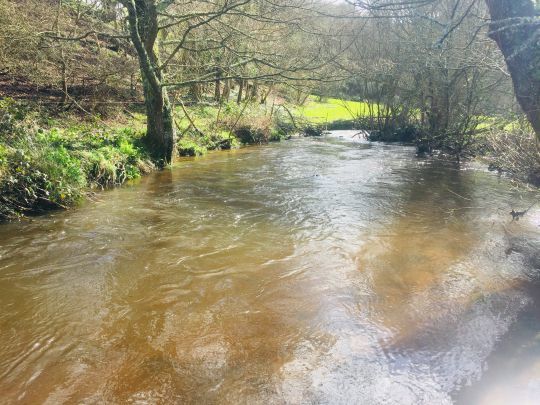
Choosing the right sector for the right conditions
Depending on the region we live in, conditions will fluctuate greatly. In the coldest regions, fish will be much less active than in the south and south-west of France, where the waters should be a few degrees warmer, which is very important at the start of the season.
In any case, as we know, especially with fly fishing, trout will be active for a very short time, mainly between 12:00 and 15:00, which is the peak of activity.
Nevertheless, if you know how to juggle the different techniques, you can catch trout for several hours and enjoy the pleasure of resetting your habits and reflexes.
Focus on areas of cushioning, edges and behind obstacles in moderately deep areas upstream of weirs. Find secondary veins along fast-flowing currents, areas of riprap or posts littered with obstacles where trout will seek out slower current speeds to catch insects and other prey.
Insisting on a position can bring trout out of their hiding places, rather than running up and down the river. Reading the water is essential if you are to fish the most interesting areas, rather than wasting time fishing empty stretches that are often too fast.
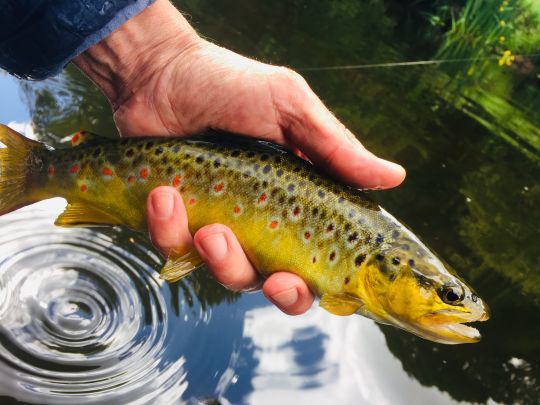
Adapting and fine-tuning your fishing
As you go along, you'll start to hit a few fish. Often short or lightning bites at the beginning of the session. Then the first trout of the day. The one that launches your season!
Identifying the type of position and/or technique, or even the fly of the moment, will enable you to adapt and favor this "pattern".
At the start of the season, remember to fish slowly and slow down your drifts. Pass close to the bottom near caches that slow down the current. Analyze the key corners of each stretch of river you fish.
Give preference to good bites, as it's often the right-sized flies that make trout want to move. A nice streamer in size 2 or 4. Nymphs in sizes 12 to 14. A larger size for drowned flies (10 and 12).
Beige, brown, olive and black colors are often the most versatile, with a little color added to increase visibility in the often pitted or sediment-laden waters of the early season. A tag on the tail or behind the head can make all the difference.
Change sizes and colors regularly to find what trout like, and fine-tune your fishing so you can catch your first trout of the season and launch the new season!
NB: avoid walking in the water (at least until mid-April) or at least on the riffles to avoid trampling trout and salmon spawning grounds.

